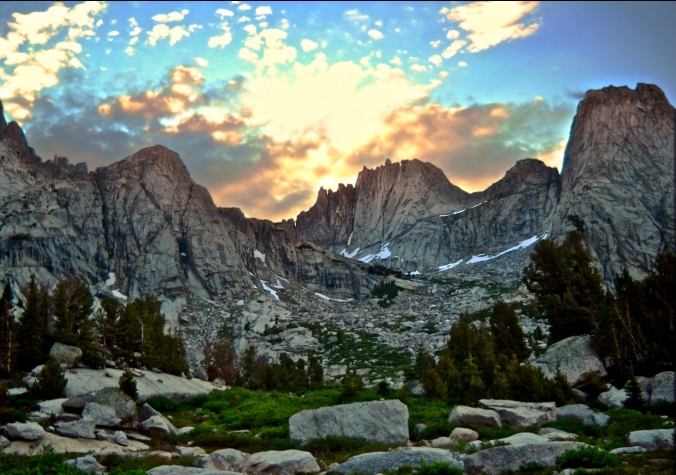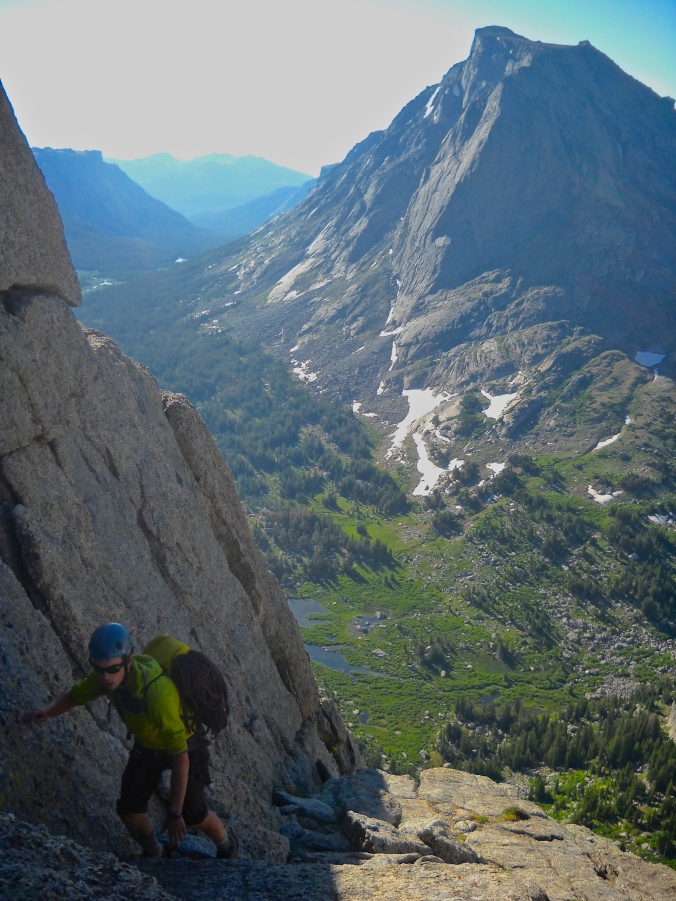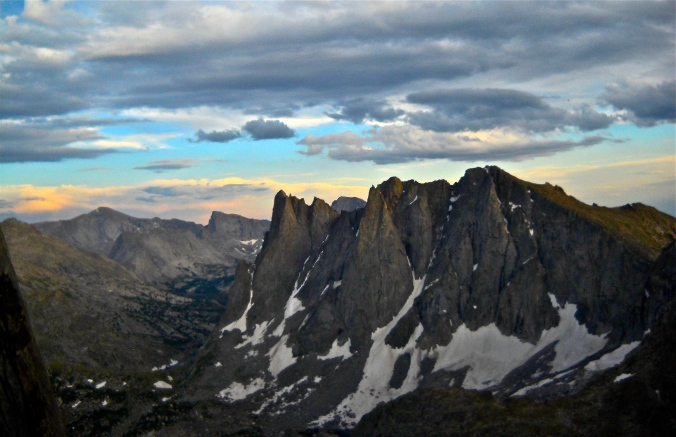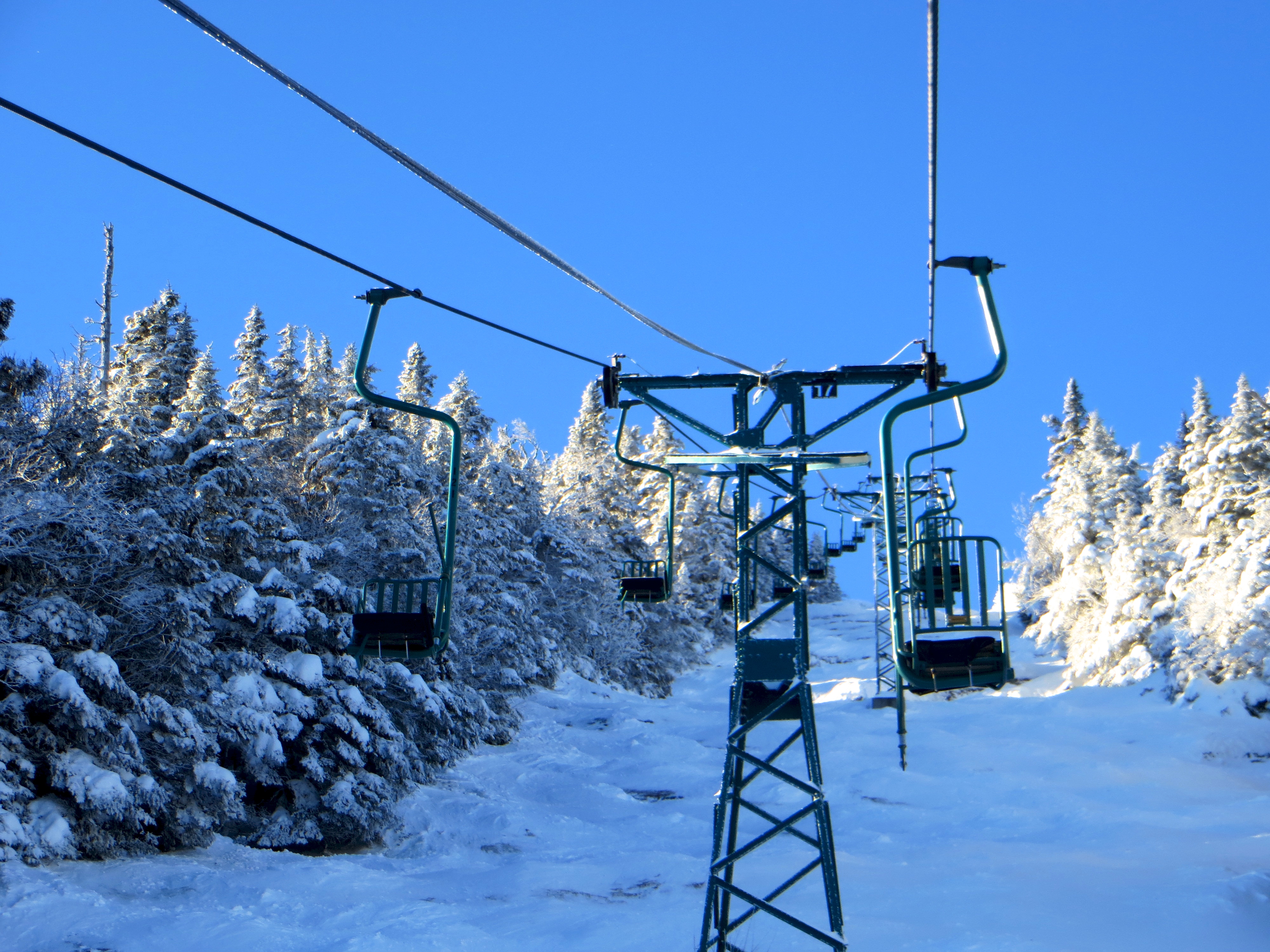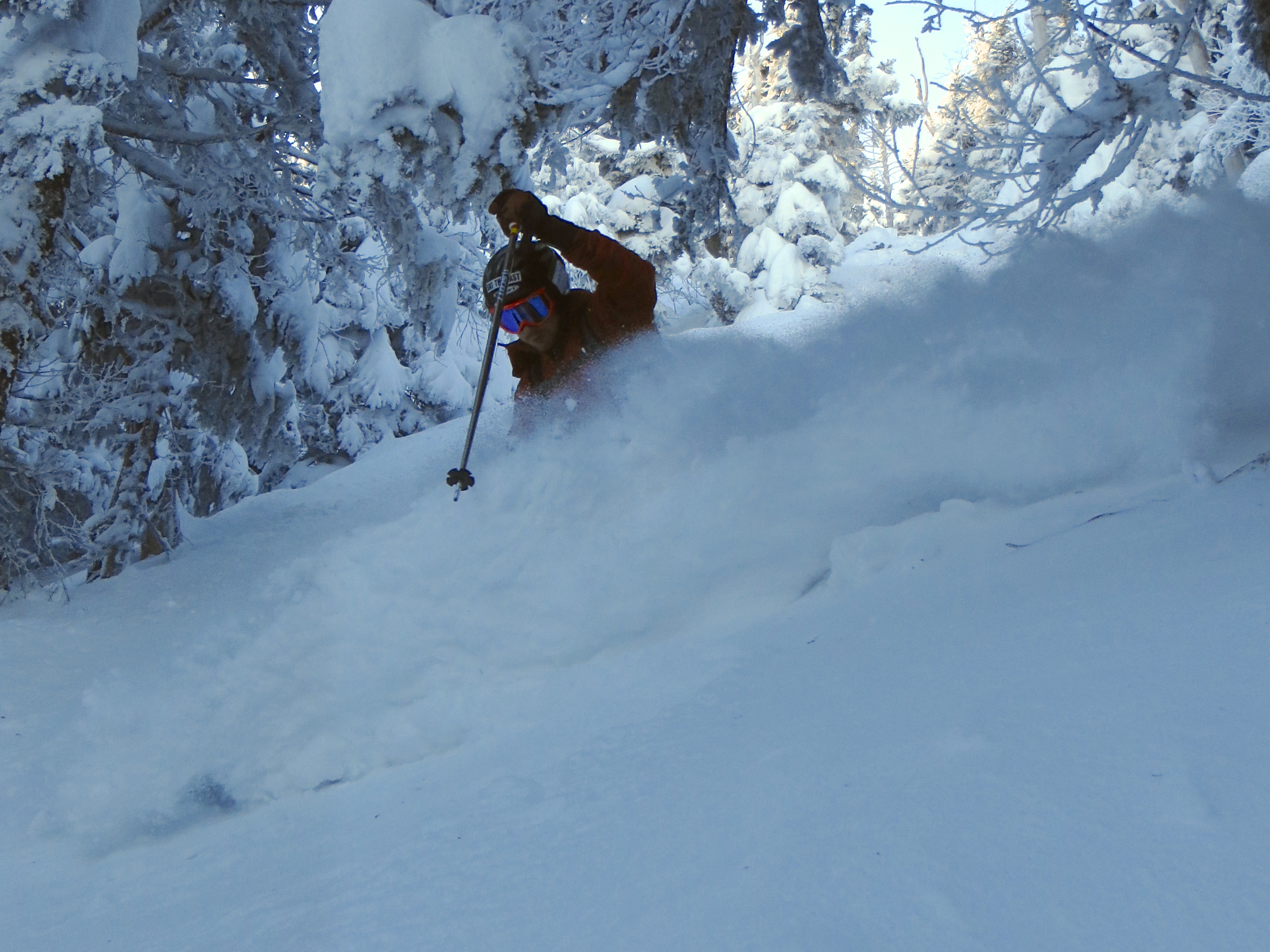by Mara Gans ‘15.5
“That’s good coffee,” said Eli Mauksch (’15) as we drove his Subaru out of Lander, WY and up towards the Wind River Mountains. I sipped my own coffee, trying not to critique the under extraction to much… I’d had better. Mostly though, I thought about the adventure ahead. I’d spent my entire life growing up in the shadows of the Cirque of the Towers and had long ago learned to sport climb in their foothills, but until today, I’d never had plans to climb any of their big peaks. Sure, I’d fantasized about it… but most of those dreams were pushed away into the to-do-when-I’m-older-and-wiser drawer of my life plan. Which, mostly means, I didn’t actually believe climbing them was possible.
However, when a peppy and confident Eli showed up at my house with his friend Austin and a trad rack in tow, I certainly wasn’t going to turn down an offer to expand my outdoor playground a little. So, after some driving, hiking, and a thorough discussion on who we’d put on our Zombie apocalypse team and whether we were cake or pie people, we set up camp at the base of the cirque. Eli and Austin spent the remainder of the evening with their heads towards the rocks and their noses buried in the climbing guide, scoping out routes and fantasizing about being stronger climbers. I spent most of my evening looking at flowers and taking pictures in silent disbelief that we were actually going to manage climbing anything. We packed up for the next day: some extra clothes, climbing gear, food, and a couple headlamps amongst the three of us. I sort of thought we should each bring our own headlamp, but mostly I was still caught up in the flowers.
Our first day was a breeze up the three pitch 5.8 K-cracks variation on the South Buttress of Pingora. Or at least I though so; I’d given up any decision-making, route finding and leading to Eli and Austin, and so I happily, thoughtlessly followed along, stoked about the clouds, and rock crystals, and flowers. I also complained some about my feet. Apparently multi pitch climbing and scrambling aren’t so great in way-too-small aggressive sport climbing shoes. Lesson learned. We summited Pingora and rapped off to it’s mini neighbor Tiger Tower, which I scrambled up barefoot, trying to save my feet, and imagining how not cool my parents would be with my current combination of unroped exposure and lack of appropriate footwear. I guess you have to break their rules sometime. We rapped off the other side of the tower and walked back to camp.
The next morning we packed up and again took off towards the granite walls. Confident after a successful yesterday, we started pulling on rocks at a leisurely 10 or 11 am—definitely stretching the borders of “the alpine start.” We started a not-so-highly-recommended grassy ledge approach to the 5.6 classic, the East Ridge of Wolf’s head. Besides a general lack of protection and layers of ledges full of exposed, slippery, wet grass, the grassy ledge approach wasn’t that bad. Nonetheless, I was thrilled when we finally made it onto the ramp. Ahead stretched pitch after pitch of sidewalk like exposed ridge followed by columns of rock towers waiting to be woven between. I may not be one to pour over images in guidebooks, but once on the rocks I had no doubt that there was no where I’d rather be—I’ll leave looking at flowers for gardeners.
In a many ways climbing’s a lot like dancing. The wall is your partner, and each feature a sequence in the flow of a dance. The best climbers aren’t the strongest individuals, but rather the ones who can best match their own movements to the lead of the rock. Dancing with the East Ridge is unreal: Tiptoeing exposed slabs over thousand foot drops is broken up by flawless hand crack traverses—guiding you boldly over its stunning ridge and intimately through its many towers. All that said, however, I’m not really that great a crack climber, so my dance definitely involved more bicep strain than grace. But, I guess that’s what there’s a ‘next time’ for. Above us, the sun moved across the sky, and we watched a storm system build up above Wind River Peak to the south. We’d lucked out; afternoon storms build up quick in the summer, but this one missed us.
More dancing was matched by the continual saunter of the sun, and we eventually reached the summit. You never want to spend too much time on top, but our 7 pm summit time made hanging out particularly unappealing. Eli’s guidebook recommended a descent involving a few raps and a way-longer-than-we-wanted scramble off another part of the ridge. Some mountaintop I-spy reveled a different set rap anchors just below. The guidebook didn’t note them, but confidence in the length of our double ropes directed us there anyhow.
It was a good call. A couple raps later, hanging off a vertical wall at 12,000 feet I watched an absurdly phenomenal sunset. Normally watching a sunset you look up to the horizon. This time I was looking down. One rap later, it got dark. I guess that’s what normally follows phenomenal sunsets. Eli and Austin pulled out their headlamps. I didn’t have one to pull out.
The next three-ish (60 m long) rappels I made were in the dark. Well sort of. Stars lit up the sky, marking a clear division between rock and heavens. If you believe in that sort of thing, that is. Eli and Austin’s headlamps danced above and below. Murmurs of nylon jackets and whispers of ropes sliding through expensive rap devices spoke a subtle reminder that, as much as I call the mountains home, I owe it to my ‘man-made’ props to even make it out there. Alpine romance is charming, but it’s not outright purity.
After an eternity of rappels (Eli was counting, I was looking at the stars), my feet came to support their own body weight. It was late; and our sleeping bags were still a mile or more of steep boulder fields away. Now I wanted my headlamp. I switched my thoughts out of ‘beauty appreciation mode’ and into their ‘pay attention now, or you’ll break an ankle’ setting. Silently computing our footsteps, we worked our way down. I hovered between Eli and Austin’s headlamp beams, reducing my world and mind down to each step and the pool of light around it.
Sometime after midnight we made it back to the valley floor, but not to our tent. After all the technical climbing, scrambling and navigating we’d done, locating our beds proved to be the surprise crux of the day. Stumbling around, everything looked the same in the dark: tents and boulders, trails and streams. For the first time all weekend I felt my good attitude start to waver. I insisted our tent was farther south. I was wrong. Eli suggested backtracking on the trail we came down. Still no tent. We stopped to elect another direction, referencing boulders, tiny streams, and faded trails. Nothing was that convincing. I zoned out and looked up at the sky. My mind’s ‘pay attention’ setting faded as I retraced the silhouette of the cirque—again, that clear division between rock and heavens. This time, however, it was different. A new angle on the peaks was like turning a page in a coloring book… you get the same theme, but different outlines.
“Wait! I know how we can find our tent!” I announced. “Which peaks could we see from camp? We just have to walk until we find the same view and we’ll find our tent.” As I stated this, I felt dumb for not knowing myself what the silhouette of the cirque had looked like from camp, but I knew in the hours Eli and Austin had spent pouring over the guidebook and mountains, they would know exactly what we’d been looking at.
Sure enough, they did.
A couple days later, Eli and Austin again piled into the Subaru; this time, without me, as they departed for their next adventures. As they drove off, I sat enjoying a not-under extracted cup of coffee, contrasting the science and calculating that goes towards brewing it, with the splendor of its heavenly taste. It’s not unlike a good day in the mountains, where you need both an appreciation of beauty and a meticulous calculation of the details to make it home. That is, if they were ever ours to call home in the first place.

